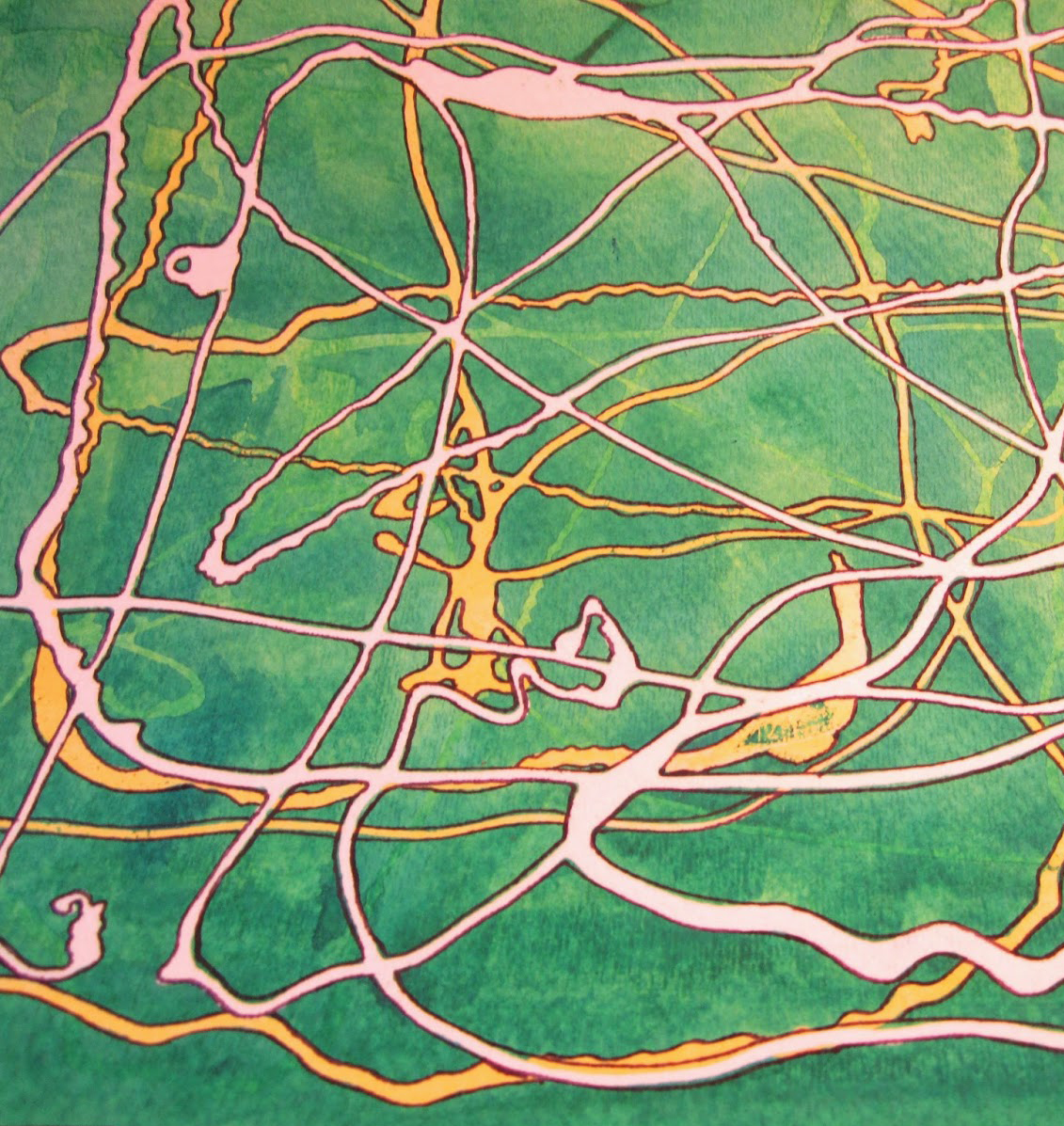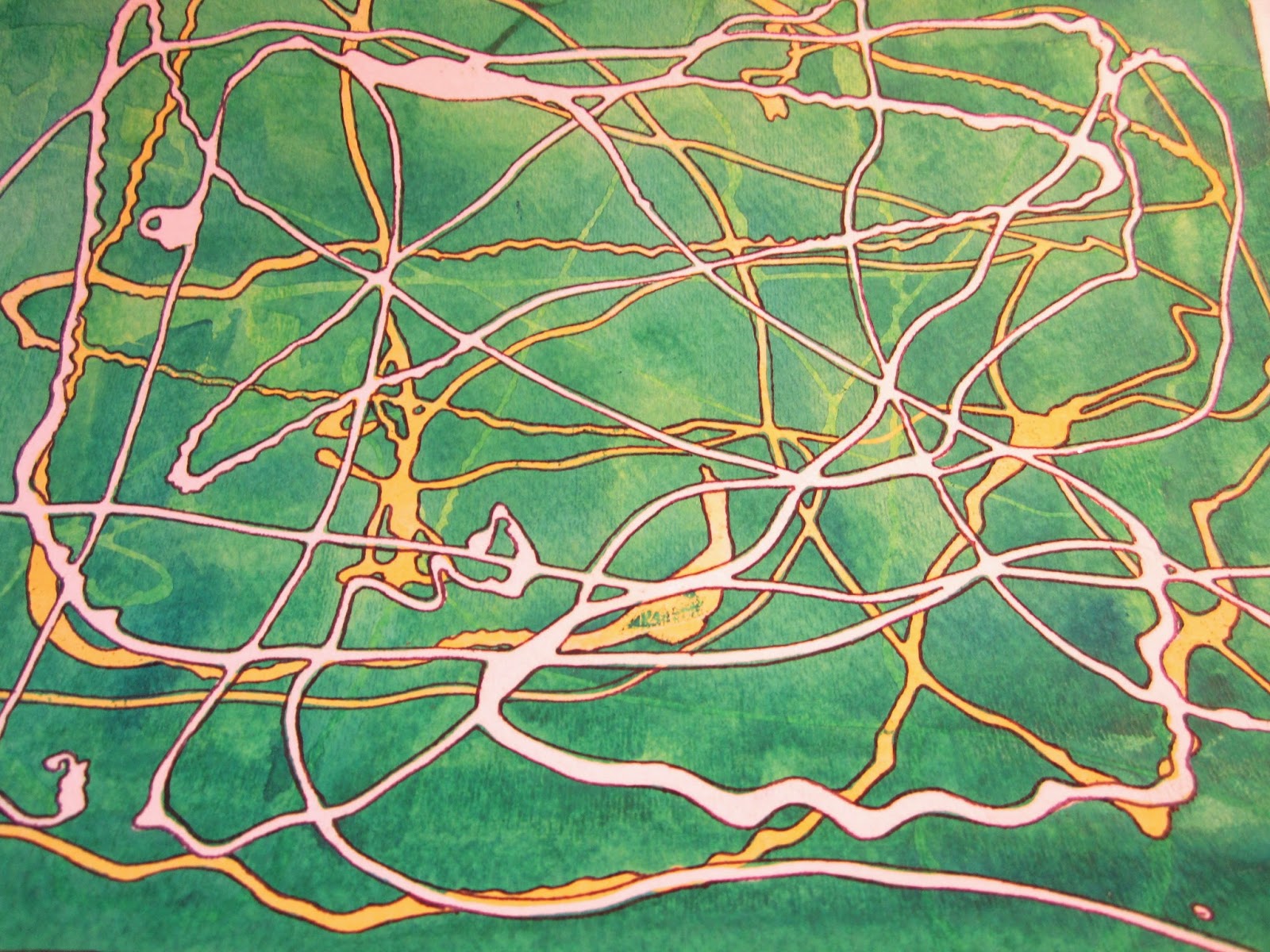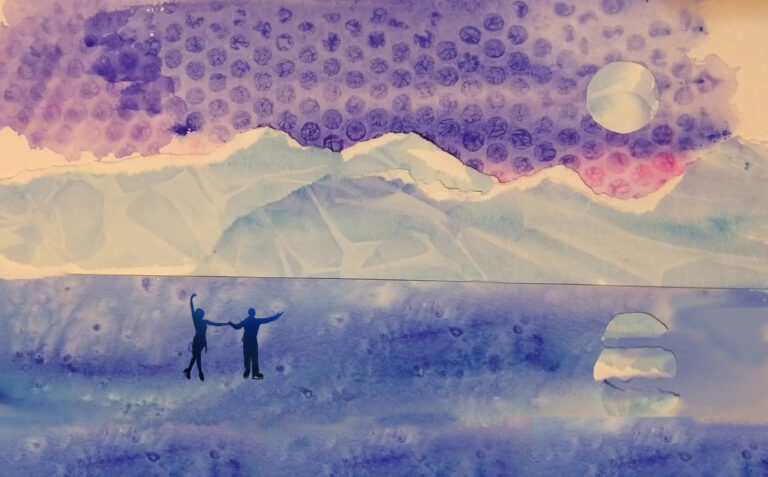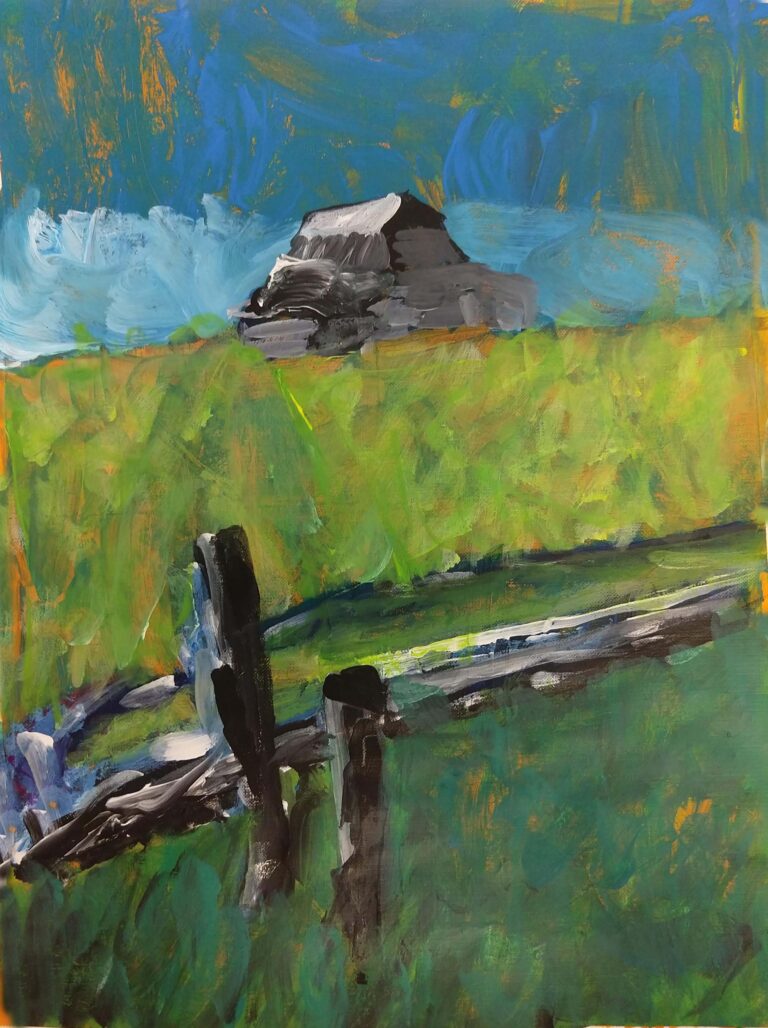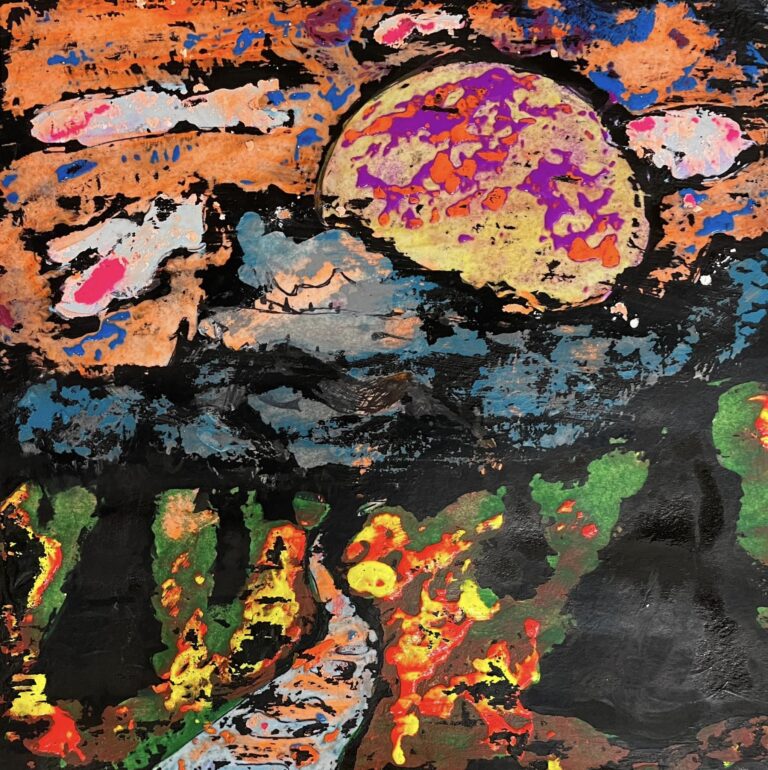Grade Level
Duration
20 class periods, periods are 50 minutes long
Materials
140 lb watercolor paper, watercolor sets (Prang is recommended), board/cardboard, fine tip Sharpie, rubber cement
Media
watercolor, mixed media
Lesson Objectives
For the student to:
- explore the element of the art of line and color.
- understand how to use watercolor and resist as a watercolor technique
- observe and demonstrate watercolor techniques such as; watercolor washes, wet wash, wet-in-wet, gradients, color blending, bleeding, layering, lifting color, etc
Introductory Activity
First, use blue painter’s tape to secure a 9×12 cold-press watercolor paper to a piece of scrap board. (I tried low-tack artist’s tape first, and too much watercolor paint seeped underneath it.) The blue painter’s tape leaves a gorgeous crisp edge.
Lesson Process
Please note: Breathing in large amounts of rubber cement fumes or swallowing any amount can be extremely dangerous. So, pick a well-ventilated space or even go outside for step one. If you don’t mind a shine, you can try using LIQUITEX GLOSS MEDIUM as a resist material instead of rubber cement.
1) Next, dribble rubber cement over the watercolor paper. There is no planning, just random dripping in all different directions. Allow to dry.
2) Using lighter colors apply washes of color to some or all of the paper. Allow to dry and apply more random rubber cement lines on top of the first colors applied.
3) Repeat allowing the colors to be more concentrated and/or darker.
4) After drying pull back the painter’s tape (at an angle away from the artwork, which helps it not pull up the paper) and enjoy the crisp edge along the perimeter of the watercolor paper.
5) The next step is for students to use the pads of their fingers to rub away all of the rubber cement that has been resisting various layers of watercolor paint. The rubber cement comes away in balls and crumbs and leaves behind the wonderful pathways that give the art such a map-like quality. * If you use Liquitex medium it is permanent, no removing the media.
6) Using a fine-tipped black Sharpie pen, outline various pathways around the piece. Start with all of the white pathways, and usually move on to the secondary colors, like yellow in this piece.
Vocabulary
line, watercolor, wash, resist, watercolor washes, wet wash, wet-in-wet, gradients, bleeding, color blending, layering, lifting colorResources
- watercolor techniques, HERE.
Author & Website/Blog
Andria
Technique inspired by Grow Creative.

